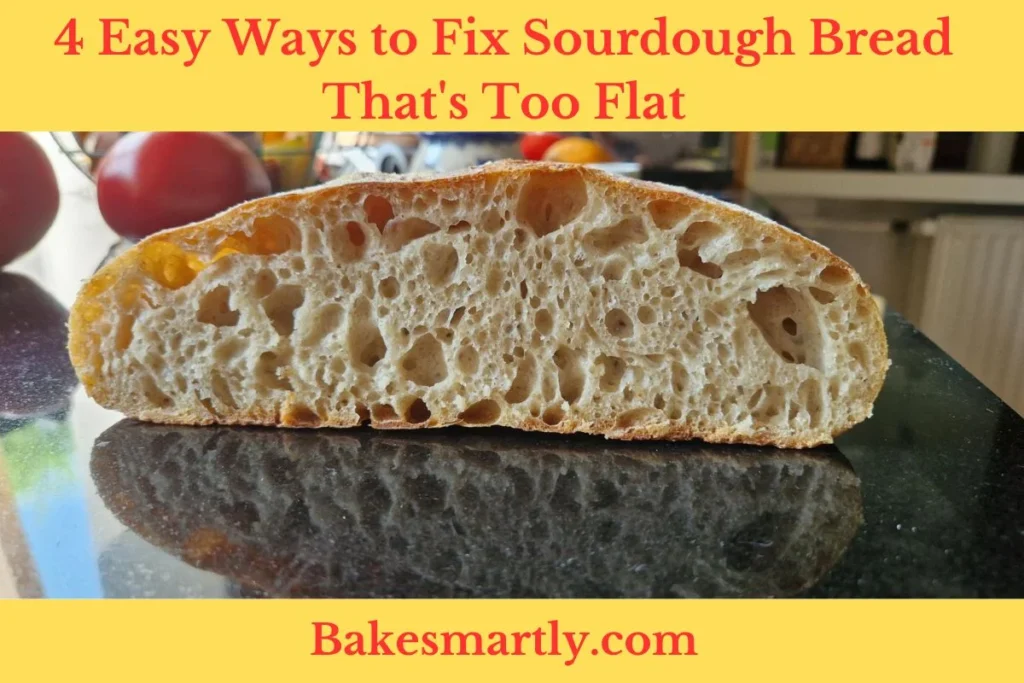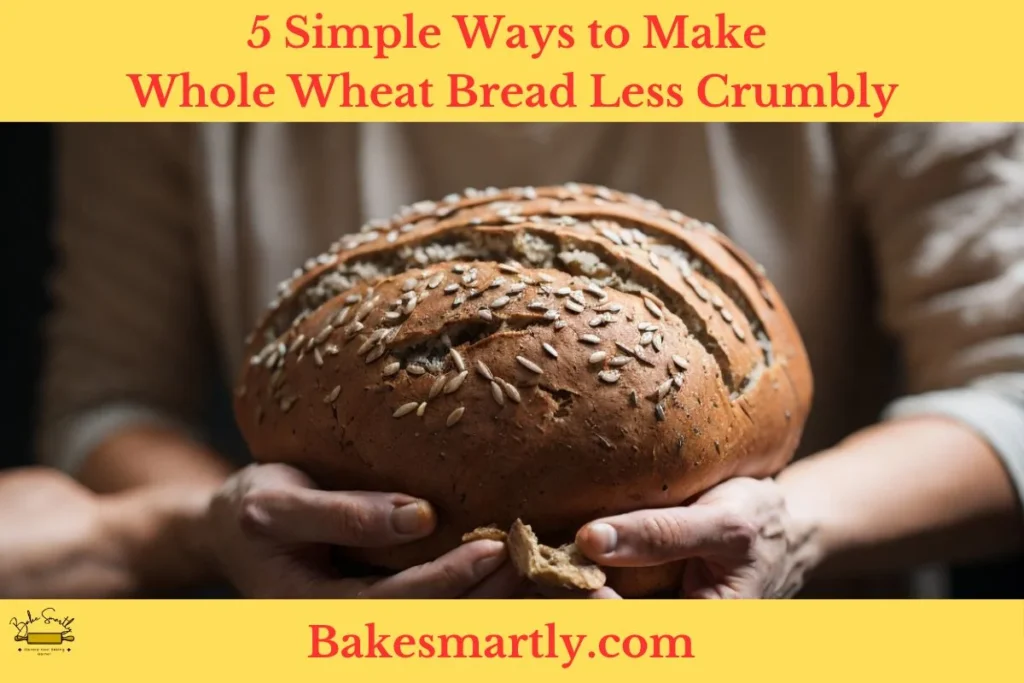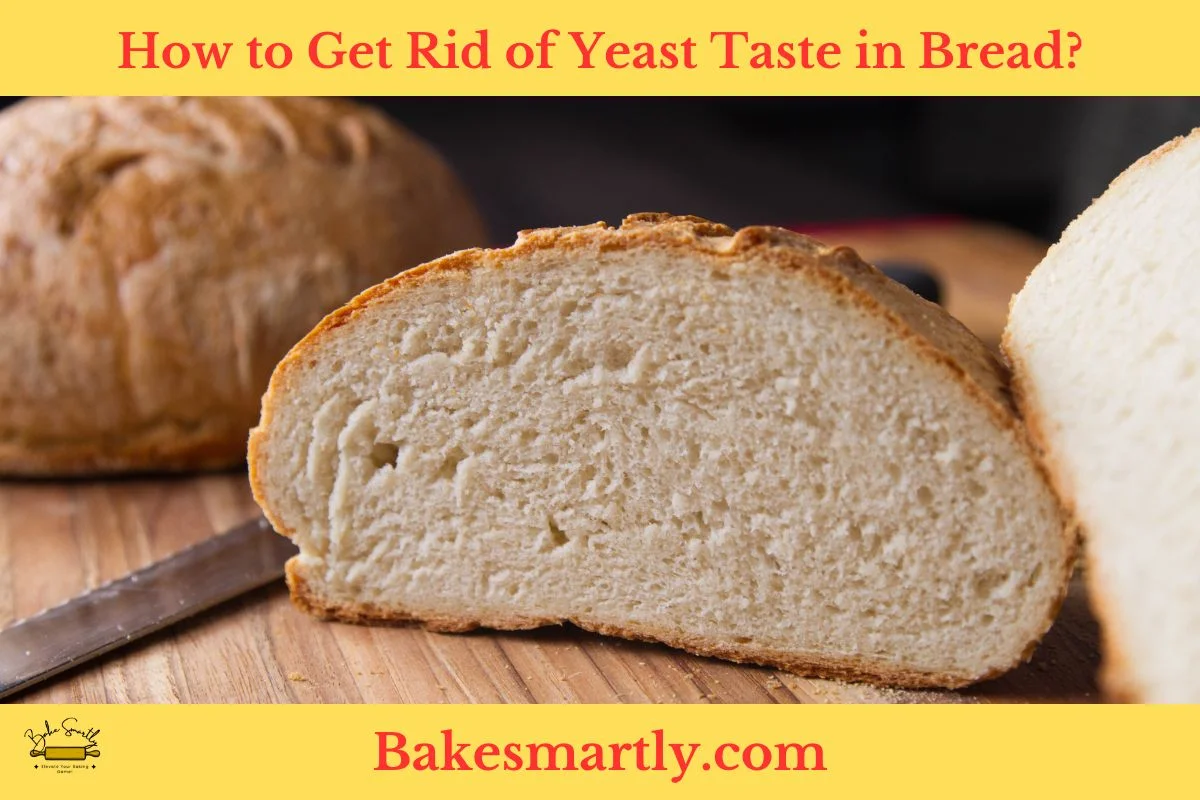
Bread is a staple in many households, but sometimes, it can have an undesirable taste of yeast. Whether you’re a seasoned baker or a novice in the kitchen, the taste of yeast can be off-putting.
In this article, we’ll explore various methods to eliminate that yeast taste and make your homemade bread delicious. Let’s dive right in!
Table of Contents
Toggle3 Common Reasons that Cause a Yeasty Taste in Bread
The yeasty taste in bread can be a disappointment, especially when you’re expecting a delightful, flavorful loaf. To tackle this issue effectively, it’s essential to understand the common reasons behind that unwelcome yeast flavor.
Here are three primary factors to be aware of:
1. Overuse of Yeast
Using too much yeast is a leading cause of the strong yeasty taste in bread. Yeast is a microorganism responsible for the fermentation process in bread baking. It consumes sugars and produces carbon dioxide gas, which causes the dough to rise. However, when an excessive amount of yeast is added to the dough, it can’t consume all the sugars during fermentation, leaving behind a pronounced yeasty flavor.
Solution: To prevent this, measure your yeast carefully. Digital kitchen scales are invaluable for precise measurements. Typically, you should use about 2-3% of yeast based on the total flour weight. Adjust this ratio if your recipe specifies a different amount.
2. Extended Fermentation Periods
Fermentation time plays a crucial role in bread flavor development. Longer fermentation periods allow the yeast to produce more carbon dioxide and organic acids, which contribute to a robust flavor. However, if the dough ferments for too long, the yeasty taste can become overpowering.
Solution: To strike the right balance, follow your recipe’s recommended fermentation time. As you gain experience, you can experiment with shorter fermentation periods to achieve a milder taste. Additionally, consider retarding the dough in the refrigerator for slower fermentation, which can help control the yeast’s activity.
3. Inconsistent Temperature Control
Yeast is sensitive to temperature fluctuations. Inconsistent temperatures during the rising process can lead to an uneven distribution of yeast activity, resulting in a yeasty taste. Ideally, the dough should be kept at a stable temperature, typically around 75-80°F (24-27°C).
Solution: To avoid temperature-related issues, invest in a kitchen thermometer to monitor the dough’s temperature accurately. Create a warm, draft-free environment for the dough to rise, using a proofing box or an oven with the light on.
Understanding these common reasons for a yeasty taste in bread is the first step towards improving your baking skills. By carefully measuring yeast, controlling fermentation time, and maintaining consistent temperatures, you can create bread that delights the senses with its flavor and aroma, while the yeasty taste takes a backseat.
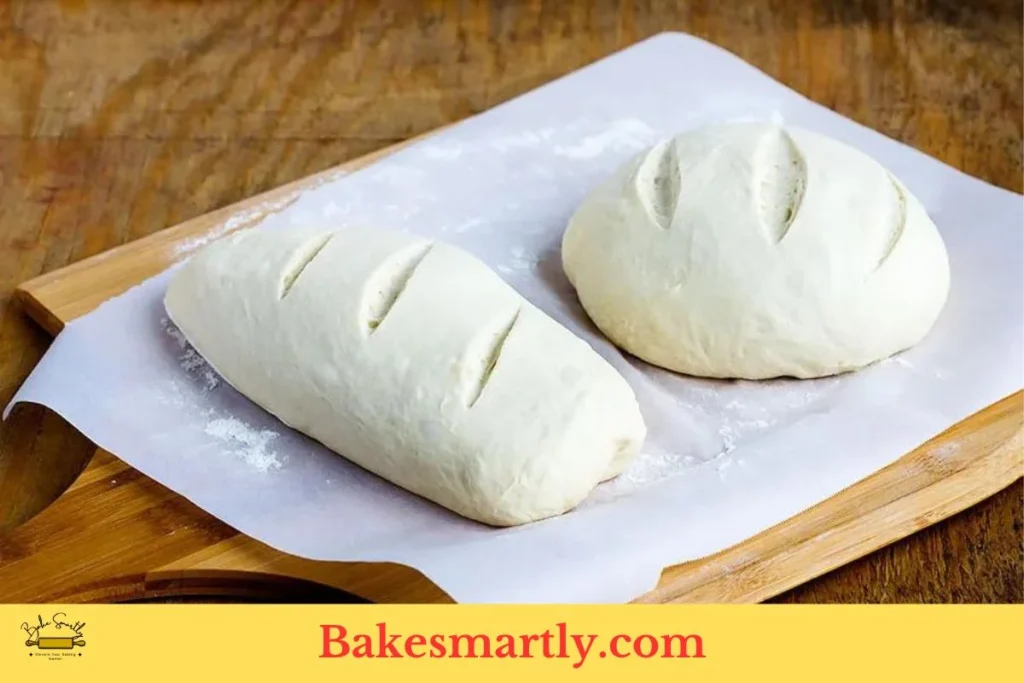
What You Can Do To Prevent A Yeasty Flavor In Your Bread
Creating delicious bread that’s free from that strong yeasty taste is an art that involves careful planning and execution. To prevent a yeasty flavor in your bread, consider the following steps:
1. Precise Yeast Measurement: One of the primary culprits behind a pronounced yeast taste is using too much yeast. Invest in a digital kitchen scale to ensure accurate measurements. Generally, it’s recommended to use 2-3% of yeast based on the total flour weight.
2. Temperature Control: Yeast is sensitive to temperature fluctuations. Maintain a stable environment during the fermentation process. For most bread recipes, a temperature of 75-80°F (24-27°C) is ideal. You can use a proofing box or a warm oven with the light on to achieve this.
3. Optimal Fermentation Time: Be mindful of the fermentation time. Longer fermentation times can intensify the yeast taste. Start with the recommended time in your recipe, and as you gain experience, you can experiment with shorter times to find your preferred balance.
4. Quality Flour Selection: The type of flour you use can greatly impact the flavor of your bread. Consider experimenting with different flours like whole wheat, rye, or spelt to find a taste that suits your palate while reducing the yeast taste.
5. Preferment Techniques: Incorporate preferment techniques like poolish or biga, which involve pre-fermenting a portion of the flour and yeast. This not only enhances flavor but also helps mellow the yeast taste.
6. Sourdough Blends: If you enjoy the tangy flavor of sourdough, consider blending a small portion of the sourdough starter with your yeast-based dough. This adds complexity to the flavor and can help mitigate the yeasty taste.
7. Experiment with Additions: Get creative with your bread by adding ingredients like herbs, seeds, or dried fruits. These additions can infuse your bread with unique flavors that distract from any residual yeast taste.
By following these steps and experimenting with different variables, you can significantly reduce the yeasty flavor in your bread.
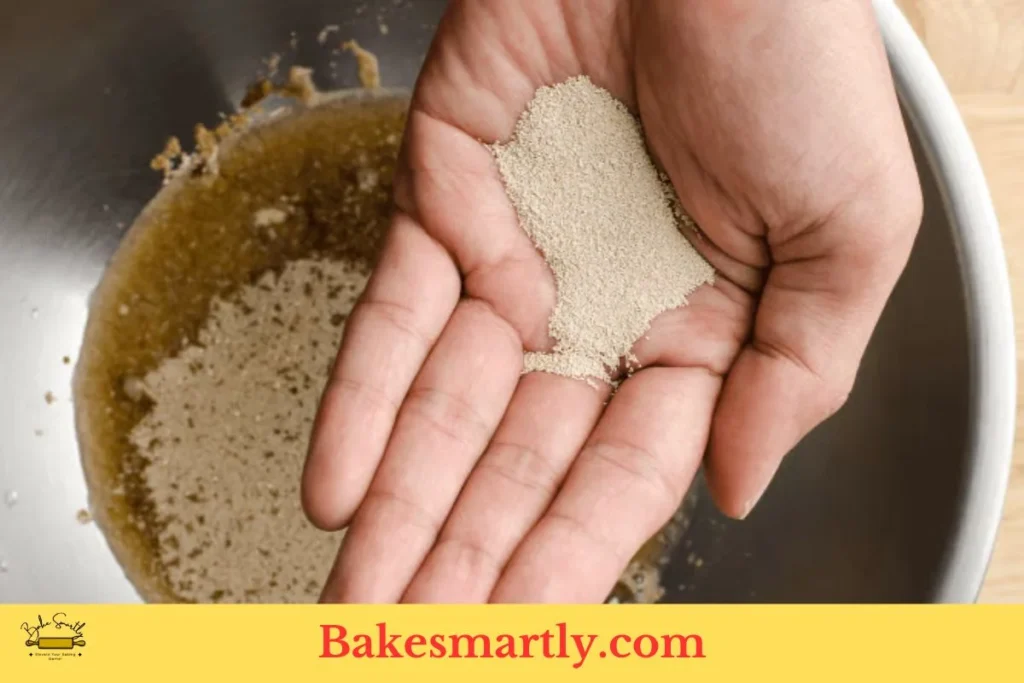
What Will Happen if I Put Too Much Yeast in Bread?
If you put too much yeast in bread, it can have several undesirable consequences that affect the flavor, texture, and overall quality of your baked goods.
Here’s what happens when you overuse yeast in bread:
- Strong Yeasty Taste: The most noticeable effect of using an excessive amount of yeast is the development of a pronounced and unpleasant yeasty taste. Yeast is a living microorganism that ferments sugars in the dough, producing carbon dioxide gas and alcohol as byproducts. When there’s an abundance of yeast, it produces more alcohol and carbon dioxide, resulting in a stronger yeast flavor that can overpower the bread’s other flavors.
- Too Rapid Rising: Excess yeast leads to a rapid rise in the dough. While some rise is necessary for bread to achieve its desired texture, an overly quick rise can cause problems. The dough may not have enough time to develop complex flavors through fermentation, resulting in a bland taste despite the strong yeast presence.
- Poor Texture: Overusing yeast can lead to an overly airy and less desirable bread texture. The excessive gas production causes larger and irregular air pockets in the crumb, making the bread appear holey and less structurally sound.
- Risk of Collapse: When the dough rises too quickly due to excess yeast, it may not have the strength to hold its shape. This can lead to bread loaves that collapse or have an uneven, deflated appearance.
- Shortened Shelf Life: Bread made with too much yeast tends to stale more quickly. The excessive yeast activity can break down the starches in the bread, causing it to become dry and lose its freshness faster.
- Digestive Issues: Consuming bread with an abundance of yeast may cause digestive discomfort for some individuals. The excess yeast can continue to produce gas in the digestive system, leading to bloating and flatulence.
To avoid these issues, it’s essential to measure yeast accurately according to your recipe’s recommendations. Using a kitchen scale for precise measurements and following proper bread-making techniques will help you achieve a balanced, flavorful, and well-textured loaf without an overwhelming yeasty taste.
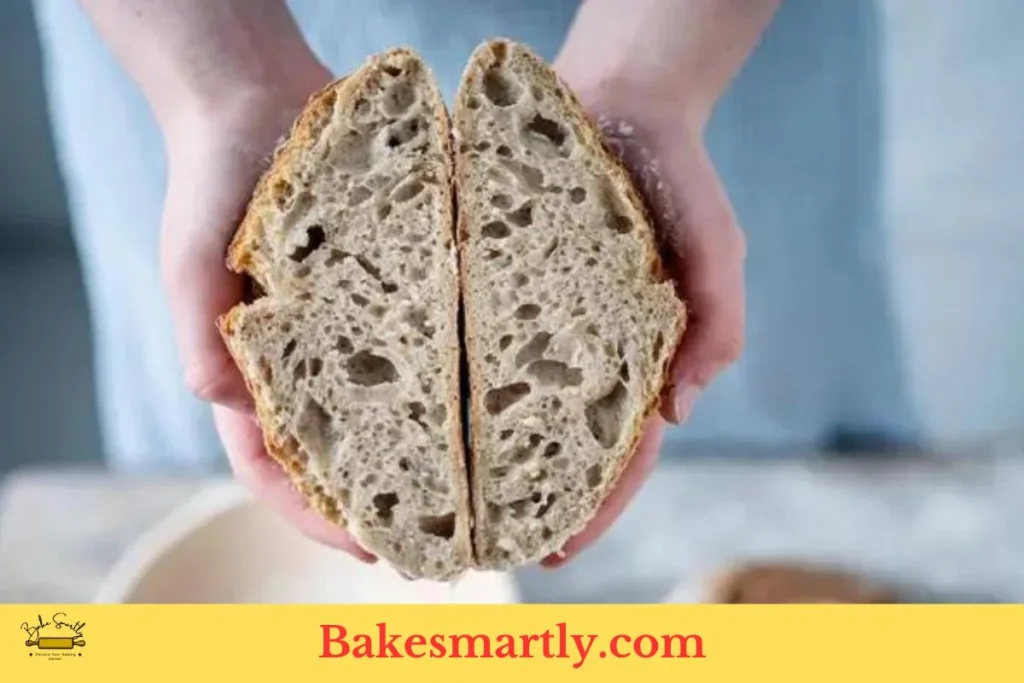
Is it OK to Eat Yeasty Bread?
Yes, it is okay to eat bread that has a mild yeasty flavor. Many people find a subtle hint of yeast quite enjoyable as it contributes to the overall complexity of the bread’s taste. Yeast is a natural component of bread, and it plays a vital role in the fermentation process that gives bread its characteristic texture and flavor.
However, it’s important to distinguish between a mild yeasty flavor, which can enhance the bread’s profile, and an overpowering yeasty taste, which can be unappealing. When yeast is used in moderation and balanced with other ingredients, it creates a harmonious flavor.
Furthermore, yeast is generally safe to consume, and it’s a common ingredient in a wide range of bread and baked goods worldwide. The small amount of yeast present in bread is not harmful and is a natural part of the fermentation process.
If you find the yeast taste in your bread too strong for your liking, you can take steps to reduce it, as discussed in previous sections, by adjusting fermentation time, using the right yeast quantity, and maintaining proper temperature control during the baking process.
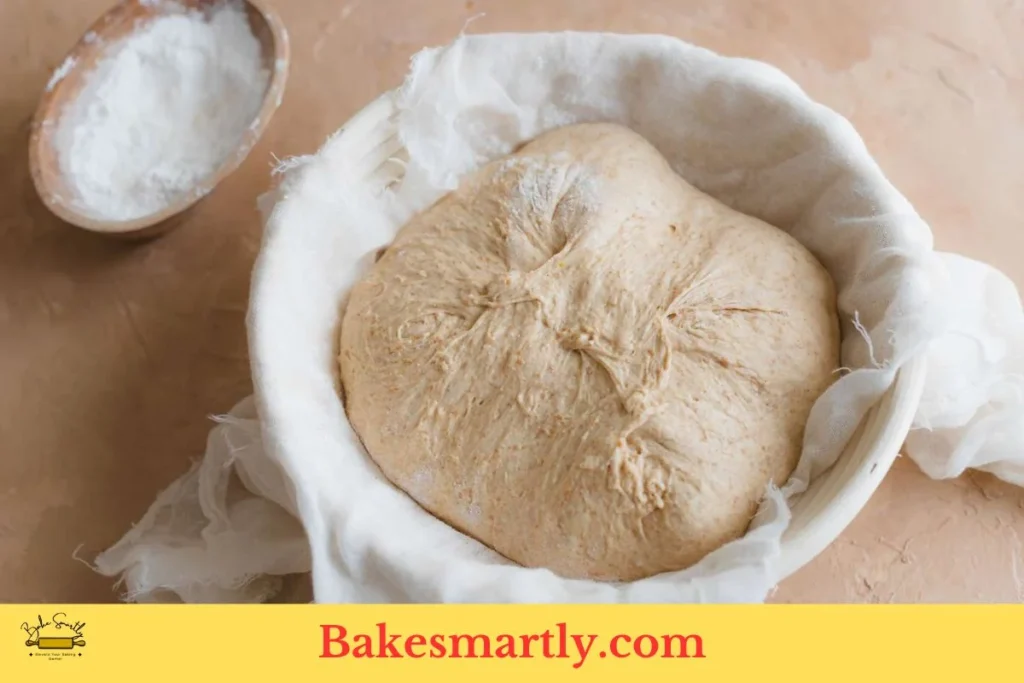
Get Rid Of The Yeasty Flavor With These 4 Rising Methods
Getting rid of the yeasty flavor in your bread doesn’t always require eliminating yeast. There are alternative rising methods and techniques you can explore to achieve a balanced and flavorful loaf without the overpowering yeast taste. Here’s how you can do it:
1. Sourdough Starter
Incorporating a sourdough starter into your bread-making process can be a game-changer. Sourdough bread boasts a distinctive, tangy flavor that not only adds complexity but also works as a natural antidote to the yeasty taste.
You have two options: opt for a pure sourdough starter for an entirely naturally leavened bread, or blend it with a small amount of commercial yeast to strike a balance between flavor and rise control. This versatile technique opens the door to artisanal bread with a character all its own, providing a delightful alternative to conventional yeast bread.
2. Poolish or Biga
Poolish and biga are time-tested pre-fermentation methods that elevate your bread to a new level of flavor excellence. In these techniques, a fraction of the flour and water unite with a minuscule amount of yeast and then ferment for several hours, or even overnight. The result?
Bread with a more intricate flavor profile that beautifully conceals any overpowering yeast notes. These methods not only reduce the prominence of yeast taste but also infuse your bread with a subtle complexity that will impress even the most discerning palates.

3. Longer Bulk Fermentation:
Extend the bulk fermentation time to allow your dough to rest for a more extended period. This patience pays off in the form of bread with deeper, more nuanced flavors. A prolonged bulk fermentation lets the yeast work its magic slowly and thoroughly, resulting in a harmonious blend of flavors that diminishes the overpowering yeasty taste.
This technique gives you the best of both worlds: the reliability of commercial yeast with the rich, developed flavors of an extended fermentation period. It’s a method that rewards bakers with bread that’s not only delicious but also memorable.
4. Combination Methods
For the adventurous baker seeking the ultimate flavor experience, experiment with a combination of rising methods. Blend a poolish or sourdough starter with a controlled amount of commercial yeast to create a truly unique bread. This dynamic duo allows you to enjoy the richness of naturally leavened bread while maintaining precision in rise and consistency.
The result is a bread with a rich, complex flavor profile and a subtle, well-balanced yeast presence that complements the overall taste. This approach adds a layer of creativity to your baking, ensuring each loaf is a flavorful masterpiece.
Remember that these methods require some experimentation to find the right balance for your taste preferences. The key is to create a flavorful loaf while reducing the yeasty taste to a level that complements the overall experience
My Final Thoughts
In conclusion, mastering the art of bread baking involves understanding and controlling the yeasty taste in your homemade loaves. By addressing the common culprits behind an overpowering yeast flavor, you can create bread that delights the senses with its aroma and taste. Proper yeast measurement, temperature control, and fermentation time are crucial factors in achieving this balance.
Furthermore, exploring various rising methods, such as incorporating sourdough starters, poolish, or longer fermentation periods, can help you craft bread with more complex flavors while reducing the prominence of the yeasty taste.
Ultimately, whether you prefer a mild yeasty hint or a stronger, tangy sourdough flavor, these techniques empower you to personalize your bread to suit your palate. With practice and experimentation, you can create delicious homemade bread that’s free from that undesirable yeasty taste, turning every bite into a delightful experience. Happy baking!
Lindsey Mackenzie
About me
Hi there! I’m Lindsey Mackenzie, the founder of Bake Smartly. Baking has been my passion since childhood, growing up in my father’s bakery. With Bake Smartly, I’m excited to share my love for all things sweet and savory. Join me on this delicious journey as we whip up scrumptious treats and sprinkle joy into every bite!

